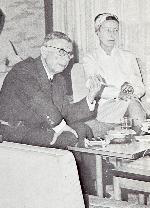![]()
Section 5: KATO Shuichi - The Second Beginning
KATO Shuichi (1919-2008) was one of the leading intellectuals of post-war Japan. He studied at the Tokyo Imperial University Faculty of Medicine while also frequenting the Department of French Language and Literature, and pored over modern French literature published in the magazine NRF [Z55-A228] and other works. He said that he was able to maintain his sanity thanks to the research of humanism by assistant professor WATANABE Kazuo (1901-1975), who maintained a critical distance during the wartime frenzy. After the war, together with NAKAMURA Shin'ichiro (1918-1997) and FUKUNAGA Takehiko (1918-1979) he published the 1946 Bungakuteki Kōsatsu (lit. 1946, Literary Thoughts) [904-Ka666s] which criticized the Japanese culture that gave rise to the militarism, and began to carry out more active critical activities based on his reading during the war. Thereafter, for 3 years from 1951 he studied hematology in Paris on a French government scholarship. KATO himself called this study abroad "sightseeing to Western countries", but it led to KATO rediscovering Japan. After returning to Japan, KATO published a number of Japanese culture essays spanning various fields including literature, art and thought, beginning with the cultural hybridity theory, which garnered a huge response. KATO's works were translated into a large number of languages and serve as introductions to Japan.
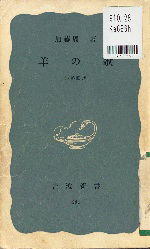
KATŌ Shūichi, Hitsuji no uta, Iwanami shoten, 1968 [910.28-Ka666h]
This is an autobiography of KATO from his childhood to around the time of the amendment of the Japan-U.S. Security Treaty. He describes his self-image as "A close to average Japanese born in the year of the sheep". The influence of Jean-Paul Sartre's autobiography The Words on the style is pointed out. In this work KATO says of his study abroad in France, "In the autumn of 1945 I set out on a journey towards a post-war Japanese society, and then in 1951, I set out on a journey for sightseeing to Western countries. This was the second beginning for me in my lifetime". The unforgettable people he met during his study abroad, Japan as seen from the viewpoint of western culture, and the selection of his course in life. When he returned to Japan after 3 years, seeing Japan from the Kanmon Strait filled him with a new conviction. "There is no scenery like that of the seashore of Kita Kyushu and the port of Kobe anywhere else in Asia. These types of facilities, not built by foreigners for the use of foreigners, but by local people for their own purposes, (abridged) first began to appear in Japan after Marseille." This awareness of Japan's uniqueness within Asia would become the starting point for KATO's later work.
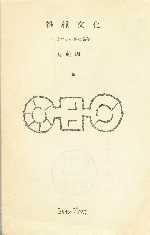
KATŌ Shūichi, Zasshu bunka, Dainihon yūbenkai kōdansha, 1956 [914.6-Ka666z]
While located in Asia, Japanese culture differs from that of both Asia and Europe, and KATO termed this "cultural hybridity". However, KATO did not consider this "hybridity" to be a negative thing. "British and French cultures are purebred, and for them that is good. Japanese culture is hybrid, and for the Japanese, that is good." (Nihon bunka no zasshusei (lit. Hybridity of Japanese Culture)) KATO positively assesses the assimilation of exogenous thought in a manner unique to the culture as a given characteristic of Japanese culture, and from there seeks to detect "hope". He sets aside the tendency to disregard exogenous thought and refine to only something indigenous, as well as the tendency to disregard something indigenous and exclusively support exogenous thought, showing their impossibility for Japan. KATO believed that democracy becoming fixed among the public in Japan, which has no tradition of a civil society, was a manifestation of the hybridity of Japanese culture, and actively sought to defend the post-war society. This work collects a series of cultural hybridity theory related works developed by KATO in the 1950's.
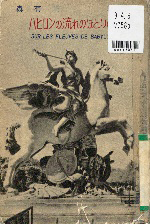
MORI Arimasa, Babiron no nagare no hotori nite, Dainihon yūbenkai kōdansha, 1957 [914.6-M758b]
Philosopher MORI Arimasa (1911-1976) was one of the first Japanese to study abroad in France on a French government scholarship after the war, the year before KATO's study abroad. From his time at the Department of French Language and Literature during the war, MORI was friends with KATO and when KATO arrived in Paris, MORI was waiting for him at the airport. Unlike KATO, who returned to Japan after his 3 years of study abroad, MORI decided to live permanently in France. In this work he writes, "European civilization is not such a superficial, simple thing that it can be simply copied from the outside or learned through observation. The only thing that I can do is to walk my own path to wherever it leads me". MORI worked as a professor at the National Institute of Oriental Languages and Civilizations and the University of Paris and also served as the director of the Japan House. After this work, he published a series of essays on the topic of contact between Japanese and Western civilization, and had a major influence on Japanese intellectuals. In the novel Unmei, KATO depicts dialogue between an artist staying in France and a critic returning to Japan on the topic of developing an understanding of Western civilization, and it is said MORI and the sculptor TAKADA Hiroatsu (1900-1987), with whom he was friends during his stay in France, were the models for the characters.
HIDAKA Rokurō[et al], Sarutoru tono taiwa, Jimbunshoin, 1980 [HD131-E2] 
KATO was one of the individuals who introduced Sartre to Japan. After serving as a personal instructor for KUKI Shuzo, around 1929 when he passed the Agrégation (instructor credential test), Sartre was drawn to Eastern culture and applied as an instructor at the Franco-Japanese Institute of Kansai. Unfortunately he was not hired at this time, but in 1966 after the war he came to Japan together with Simone de Beauvoir (1908-1986) at the invitation of Keio University and the Jimbun Shoin. All of Japan was excited to welcome this intellectual giant who had such a major influence on the world after war on the occasion of his visit to Japan. During their approximately one month stay in Japan, the two travelled to Tokyo, Kyoto, Nara, Osaka, Kyushu, Hiroshima and other areas under the guidance of the French literature scholar ASABUKI Tomiko (1917-2005), and they gave lectures and had exchanges with intellectuals in various regions. This work collects three dialogues including the three way talk with Kato and French literature scholar SHIRAI Koji (1917-2004), who introduced Sartre quickly after the war. This three way talk was broadcast on NHK television and Sartre and KATO shared the stance of focusing more on the commonalities between France and Japan than the differences.
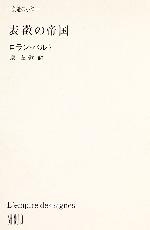
Roland Barthes, SŌ Sakon (Tr.), Hyōchō no teikoku, Shinchōsha, 1974 [GB648-16]
After Sartre, the French ideology which had a major influence on Japan was structuralism. One of the major advocates of this ideology, the critic Roland Barthes (1915-1980) came to Japan three times from 1966 onward at the invitation of Maurice Pinguet (1929-1991) who was the director of the Franco-Japanese Institute of Tokyo at the time. This work is his discussion of Japanese culture from a semiotics viewpoint based on his impressions at the time. Compared to Western European culture where signs are fulfilled by meaning, Barthes considered Japan to be a "country of signs (Empire of Signs)" which have no meaning. Whereas Japonists, Claudel, Sartre and others searched for the meaning of Japanese culture, Barthes thought, felt and enjoyed Japan in terms of function as signifiers of signs and the semiotics of signification. For Barthes, who departed from a precise analysis of signs and text, this was a work which served as the transition point to his later way of thinking of enjoying the "Pleasure of the Text", and the scope of its critic turns to the oppressiveness of Western understanding which naturalizes and absolutizes meaning.
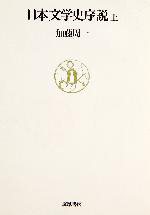
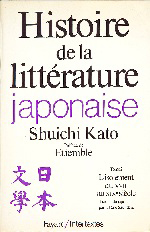
KATŌ Shūichi, Nihon bungakushi josetsu, Chikuma shobō, 1975 [KG12-67]
KATO's later work consisted of compiling the essays and works he had written on Japanese culture up to that point. His works in the literature, art and thought fields include Nihon bungakushi josetsu (A History of Japanese Literature), Nihon sono kokoro to katachi (Japan: Spirit and Form) [K81-H40], and Nihon bunka ni okeru jikan to kūkan (Time and Space in Japanese Culture) [EC211-H204]. These works were translated into various languages and widely read as a foundation for study of Japanese culture. Nihon bungakushi josetsu (A History of Japanese Literature) was serialized in the Asahi Jānaru from January 1973 to October 1979 and later compiled into a single book. In this work KATO expands on the concept of literature, and he covers such topics as ideological and religious works and declarations of peasant revolts. In addition, he does not consider modernization as discontinuity but as continuance, and the overall narrative is written from the viewpoint of what degree Japan's indigenous world view has changed due to the challenges faced as a result of exogenous thought. The work is also akin to the issue awareness of MARUYAMA Masao (1914-1996), who discussed the "old layer" of historical consciousness. A French edition was published in three volumes from 1985 to the following years and was positively received.

